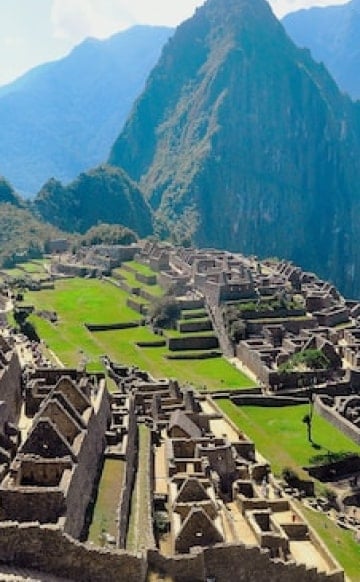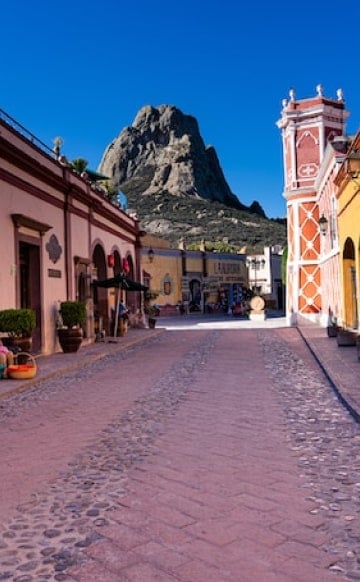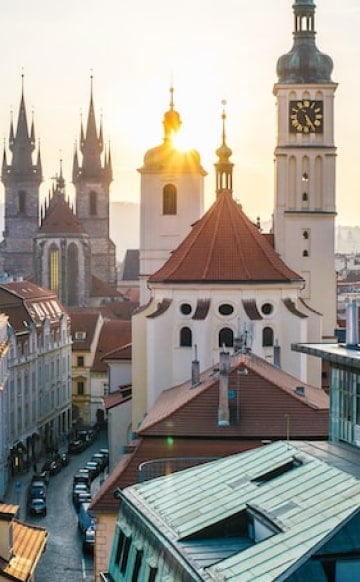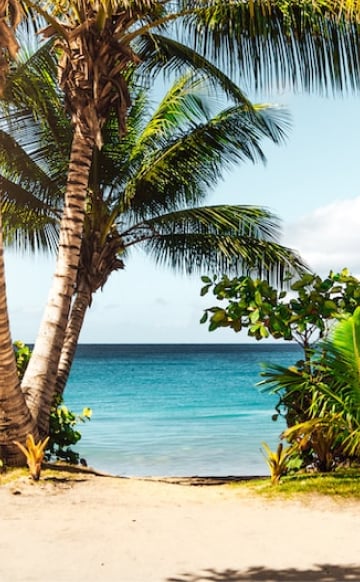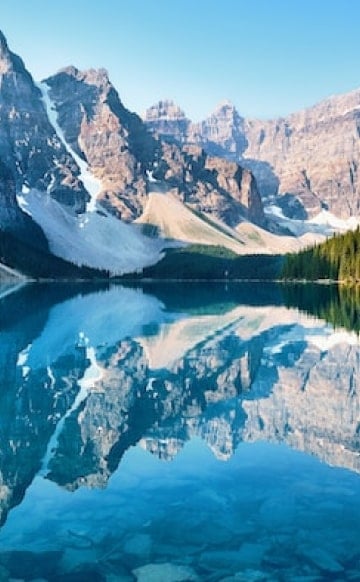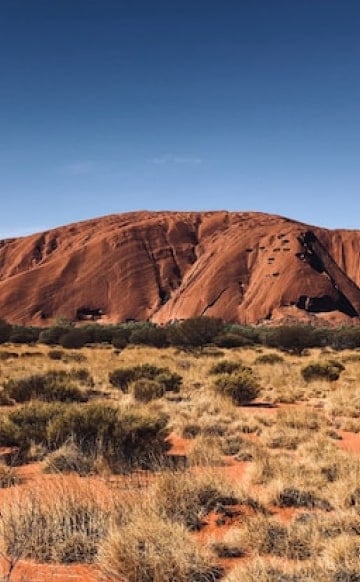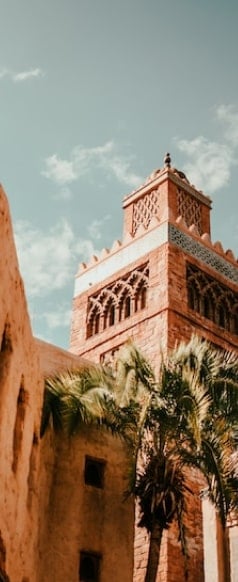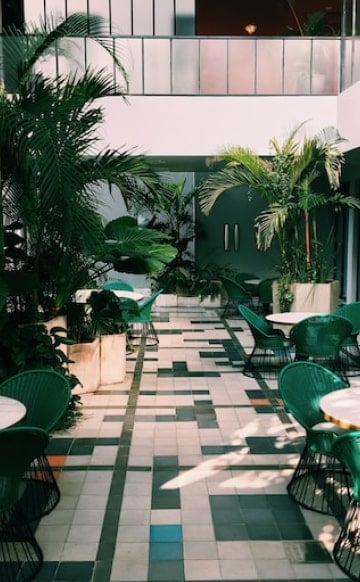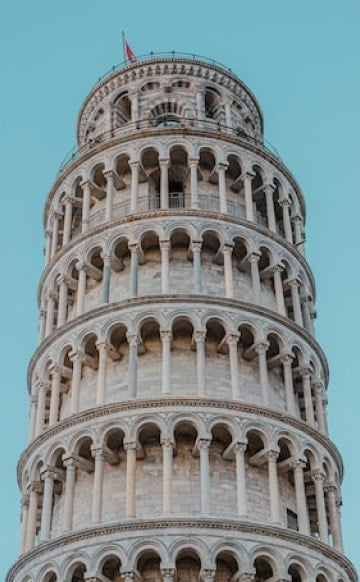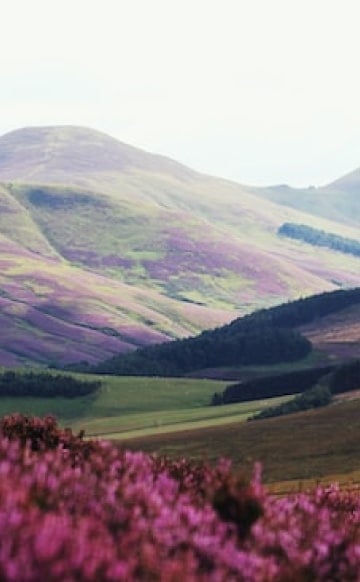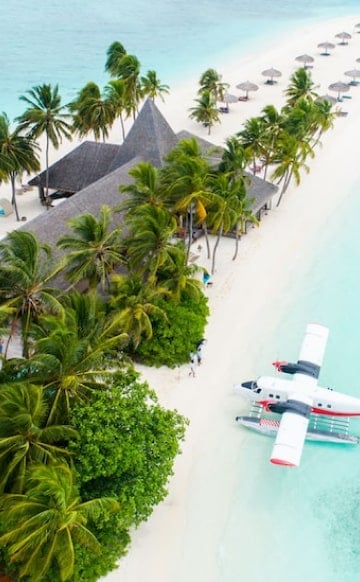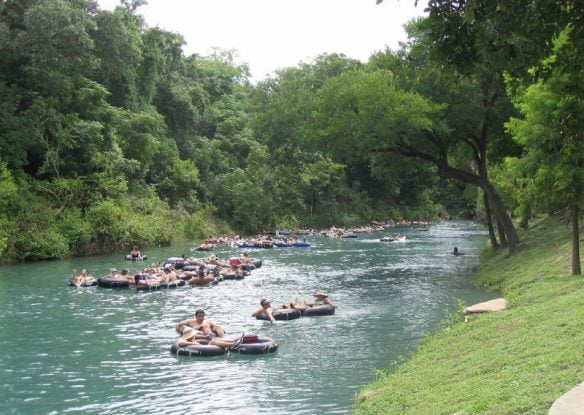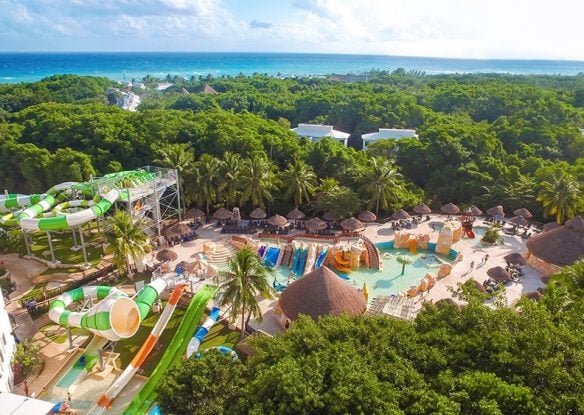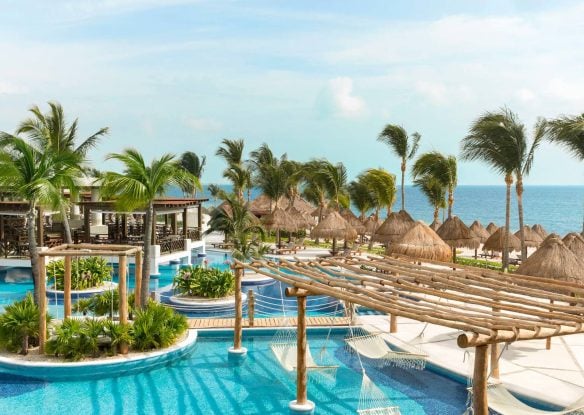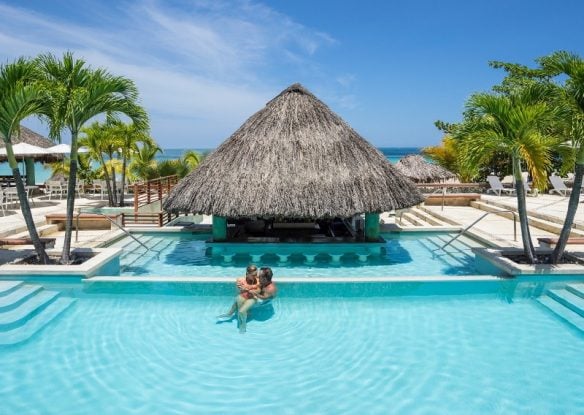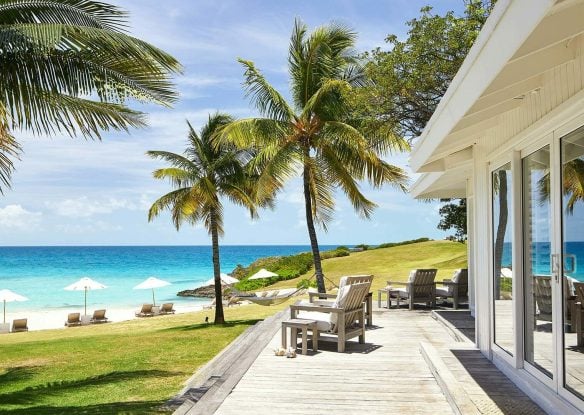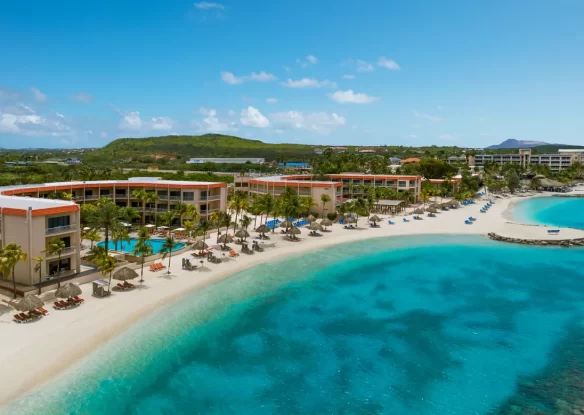The Caribbean is full of beautiful beaches, offering access to bucket-list-worthy snorkeling adventures. If you’ve been dreaming of jumping into the Caribbean’s dazzling, warm waters and entering a spectacular underwater world with pristine reefs, tropical fish and a wide variety of other marine life, here is a look at the top destinations where you can do just that.

The Baths - Virgin Gorda, British Virgin Islands
The British Virgin Islands is made up of a collection of smaller islands, each with its own unique topography and island vibe, including Virgin Gorda, most famous for the Baths, a unique national park on the island’s southwest coast. The area is unlike anything else in the Caribbean, with some of the best beaches in the Virgin Islands, framed by gigantic granite boulders. The pools and grottoes created by these ginormous boulders make it the most photogenic spot in the region. Snorkelers should follow the rocky trail to nearby Devil’s Bay, particularly in the caves on the south side, where cup corals and multicolored sponges can be seen in fairly shallow depths of 12 to 15 feet.

Pigeon Cay - Roatan, Honduras
Pigeon Cay is a miniature, picture-postcard uninhabited island, reached via a 45-minute boat ride from Roatan. It is the largest of Honduras’ Bay Islands and dotted with beautiful luxury resorts, though you may feel as if you’ve stepped onto a number planet once you get there. One side of the tiny isle features a beautiful white sand beach, and on the other, coconut trees provide shade and shelter. But the island isn’t the best part – jump into its surrounding waters to enjoy some of the most amazing snorkeling in the entire the Caribbean, if not the world. The reef starts 15 to 20 feet from the beach, surrounding the entire cay. Ideal conditions for coral growth can be found here, which means you’ll find a wide variety of species, with the bleached ivory sand bottom punctuated by Elkhorn coral as well as an extensive array of tropical fish like parrot fish and iridescent damsels.

Cayo Diablo National Park - Fajardo, Puerto Rico
Cayo Diablo straddles the border of the Atlantic and Caribbean, located just a 20-minute boat ride from the shores of Fajardo, in the eastern region of Puerto Rico. Many snorkelers and divers come here for the sea turtles that are almost always found lounging in the shallow waters, though you’ll also see stands of elkhorn and staghorn coral that are home to countless tropical fish. This may be the very best spot for a close encounter with turtles, including hawksbill and green turtles that are often calm enough that you can swim right alongside them.

Isla Mujeres, Mexico
Whale sharks are the world’s largest fish, but they aren’t anything like the star of the “Jaws” films, in fact, some say these fish that can get up to 60 feet in length, are equivalent to the “puppy dogs of the sea.” Isla Mujeres, located in Mexico’s Yucatan Peninsula, is known as one of the best places on earth to snorkel with these gentle giants that congregate in the surrounding waters from June to August in order to gulp up the local fish spawn. You’ll also have a chance to glimpse dolphins and manta rays here.

Tobago Cays, St. Vincent and the Grenadines
The Tobago Cays in the Grenadines showcase a variety of colorful hard and soft corals, fans and whips as well as being home to green turtles, nurse sharks and eagle rays that swim in the calm, azure-hued waters. Horseshoe Reef, frequently described as a kaleidoscope of colors, protects four of the five uninhabited islands that are all part of Tobago Cays Marine Park. This treasured area remains under the watchful eye of rangers who ensure the coral-reef system continues to thrive, with lots of tropical fish found in waters only five to 12-feet deep. If you’ve got your heart set on turtles, the protected grassy area right outside the beach of Baradel is the place to go.

Anse Chastanet, St. Lucia
Anse Chastanet is not only one of the best resorts in St. Lucia, but it’s a famous snorkeling spot too. It is made up of nearly 500 feet of dark, silvery sands, and is dotted with palms and surrounded by steep, forested hillsides, with a coral reef teeming with fish just offshore. The reef runs anywhere from five to 20-feet deep on the shallow end, and up to 150-feet deep on the far end. In shallow waters look for octopus, needlefish, peacock flounders and turtles, or go down a bit deeper over dense coral growth to see moray eels, parrot fish, puffers and even sea horses.

Champagne Reef, Dominica
Champagne Reef is a unique spot in Dominica, one of the Caribbean’s most spectacularly beautiful islands filled with unspoiled natural beauty, including a multitude of waterfalls and hot springs. Dominica’s subterranean geothermal activity pushes up through tiny cracks on the sea floor, filling the water with small, warm bubbles, giving the reef its name. Here, you’ll feel as if you’re swimming in your own giant bottle of bubbly as you snorkel with seahorses, frogfish, parrotfish and lobsters among the brilliant gardens of hard and soft coral.

Glover’s Reef Marine Reserve, Belize
Glover’s Reef lies roughly 30 miles off the coast of Belize, forming a large, protected link in the massive Mesoamerican Barrier Reef. The reserve encompasses the entire atoll, with its 80-square-mile lagoon inside home to some 700 coral patch reefs that offer endless snorkeling opportunities with common sightings of rays, sharks and turtles. Stay at Glover’s Atoll Resort, with accommodations including everything from campsites to thatch cabins over the water, for the chance to spend your days swimming and snorkeling right from the beach.

Bloody Bay Marine Park, Little Cayman
Little Cayman is just ten miles long and a mile wide but offers one of the premier snorkeling diving locations in the world. Its tiny population of less than 200, along with scant development, mean virtually no human-caused damage to its reefs, while its marine park status ensures continued protection of one of the earth’s most magnificent underwater attractions, Bloody Bay, regarded as the most breathtaking drop-off in the Caribbean. Snorkelers here have the rare opportunity to swim over a coral cliff, experiencing one of the most amazing undersea panoramas on the planet. While floating in the translucent waters at Three Fathom Wall, you’ll see numerous fish swimming about the bottom, roughly 18 feet below, and you may also notice many sets of curious eyes observing your journey, including the ever-fascinating hawksbill turtle. The walls of Bloody Bay are teeming with healthy creatures, including tangles of rope sponges, gigantic barrel sponges, and webs of soft corals.

Bonaire
You may have heard that Bonaire, located off Venezuela’s northern coast, is a premier diving destination, but that also holds true when it comes to snorkeling, in fact, the Caribbean Journal once named the island as one of the Top 10 Snorkel Destinations. Here, you don’t have to choose just one spot, you can practically walk anywhere to the water, jump in and find yourself in a beautiful underwater world with shallow terraces teeming with colorful fish.

Los Roques Archipelago National Park, Venezuela
Los Roques Archipelago National Park is made up of some 50 islands atop crystal-clear blue waters roughly 90 miles east of Bonaire. The isles are ringed with reefs, softened by massive coral-sand flats and turtle-grass beds overflowing with bonefish. Snorkelers can head out on a small boat with local guides to explore the islands and their practically virgin reefs, known as some of the healthiest and most bio-diverse in the Caribbean. Most of the island’s beaches offer outstanding snorkeling if you want to hit the waters right from the shore.

Exuma Cays Land and Sea Park, Bahamas
This collection of tiny cays, surrounded by coral reefs sitting in luminous blue waters is the oldest land-and-sea park on the planet, established back in 1959. In 1986, the 176-square-mile sanctuary was declared a no-take zone, resulting in conch populations that are 31 times higher than in the surrounding area, becoming a model for other refuges worldwide. You’ll see a host of marine life on the reefs, including coral, tropical fish, lobster, stingrays, barracuda and the occasional shark. The park is only accessible by boat, with unique Bahamian wildlife species like the Hutia, the only terrestrial mammal native to the Bahamas, freely wandering around. Iguanas scurry about while sea turtles and seabirds lay their eggs on the beaches.

Buck Island, U.S. Virgin Islands
Buck Island, situated near St. Croix, is a U.S. Reef National Monument boasting an incredible underwater snorkeling trail as well as amazing reefs and a beautiful white sand beach. The 176-acre island is fringed by a 704-acre elkhorn coral reef system that starts on the island’s eastern end. Beneath the crystalline waters, snorkelers will get an up-close and personal experience with grottoes and gorgonians along with all types of reef fish. At Turtle Cove, sea turtles can frequently be seen gracefully swimming through the clear waters.

Negril, Jamaica
Negril is famous for its seven-mile beach, but its cliff area to the south is amazing for snorkeling in aquarium-like conditions. By staying at the Rockhouse Hotel, you can step right from your own private bungalow and into the intensely colored azure waters that gently lap at the base of the cliffs. Jumping from these dramatic cliffs is like jumping into your personal aquarium, teeming with all sorts of species usually found only on offshore reefs.

Silver Bank, Dominican Republic
It may not be easy to reach, but venturing some 90 miles north of the Dominican Republic to a remote bank will bring you to one of the best places on earth to swim with North Atlantic humpback whales that migrate to the area to mate and calve. Here you can take in breathtaking displays of 30-ton leviathans launching in the air, and then duck into the water to witness what few will ever see. Sharing these spectacular waters with such majestic animals is an experience of a lifetime.

Curacao Underwater Marine Park, Curacao
The 12-mile long Curacao Underwater Marine Park sits along the southern coastline of Curacao, renowned as one of the best snorkeling sites in the Caribbean. You’ll find vast coral gardens, sunken ships, schools of nurse sharks and a wide variety of exotic marine life. Marked trails and signs will help you find your way and even identify just what you’re seeing. You’ll encounter hundreds of species of fish and coral just a few fin-kicks from the beach in addition to enjoying average visibility of 110 feet and temperate waters all year round.

Antigua
Antigua is considered a snorkeler’s paradise, with its powdery soft white sands, warm clear waters, natural coral reefs, shipwrecks, underwater walls and valleys home to all sorts of brightly colored tropical fish. In many areas, there is practically no current, making it ideal for first-time snorkelers and children. At Paradise Reef, just north of Dickenson Bay, you’ll find a one-mile-long coral reef that’s part of an underwater park, home to The Wreck of the Andes, a merchant ship that sank over a century ago. As the ship sits in depths of just 30 feet, it can be explored by divers as well as snorkelers.

